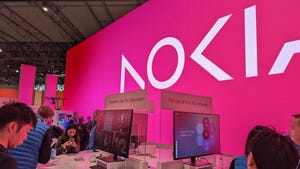Microsoft and Sony join up on AI and cloud gamingMicrosoft and Sony join up on AI and cloud gaming
Microsoft and Sony have signed a memorandum of understanding to jointly develop cloud systems for game and content streaming, and to integrate Microsoft’s AI with Sony’s image sensors.
May 17, 2019

Microsoft and Sony have signed a memorandum of understanding to jointly develop cloud systems for game and content streaming, and to integrate Microsoft’s AI with Sony’s image sensors.
This is another step on Sony’s journey to transform from a console and title seller to a game streaming service platform. Microsoft’s leadership in both cloud computing, its Azure cloud platform, and the global footsteps of its datacentres makes it an ideal partner to Sony.
The collaboration will also cover semiconductors and AI. Sony has been a leader in image sensors (among its clients is the iPhone including the latest XS Max model), and the integration of Microsoft Azure AI will help improve both the imaging processing in the cloud and on device, what the companies called “a hybrid manner”. Microsoft’s AI will also be incorporated in Sony’s other consumer products to “provide highly intuitive and user-friendly AI experiences”, the companies said.
“Sony has always been a leader in both entertainment and technology, and the collaboration we announced today builds on this history of innovation,” said Satya Nadella, CEO of Microsoft, in a statement. “Our partnership brings the power of Azure and Azure AI to Sony to deliver new gaming and entertainment experiences for customers.”
Kenichiro Yoshida, president and CEO of Sony agreed. “I hope that in the areas of semiconductors and AI, leveraging each company’s cutting-edge technology in a mutually complementary way will lead to the creation of new value for society,” he said.
Looking to the future of the PlayStation platform, Yoshida said, “Our mission is to seamlessly evolve this platform as one that continues to deliver the best and most immersive entertainment experiences, together with a cloud environment that ensures the best possible experience, anytime, anywhere.”
Gaming is following the trend of video and music from one-off ownership selling to access streaming. But gamers are more sensitive to the visual quality and, above everything else, lagging. So to provide good experience to convert gamers to long-term streaming subscribers, the platform needs to guarantee superb connection. This is where Microsoft’s datacentre footsteps and the upcoming 5G networks will fit well with the “game” plan.
Another key success factor, similar to video streaming market, is the content. Gamers’ taste can be fast changing and frivolous. That is why the companies also stressed the importance to “collaborate closely with a multitude of content creators that capture the imagination of people around the world, and through our cutting-edge technology, we provide the tools to bring their dreams and vision to reality.”
No information on the size of investment or the number of staff involved in the collaboration is disclosed, but the companies promised to “share additional information when available”.
About the Author
You May Also Like










.png?width=300&auto=webp&quality=80&disable=upscale)


_1.jpg?width=300&auto=webp&quality=80&disable=upscale)